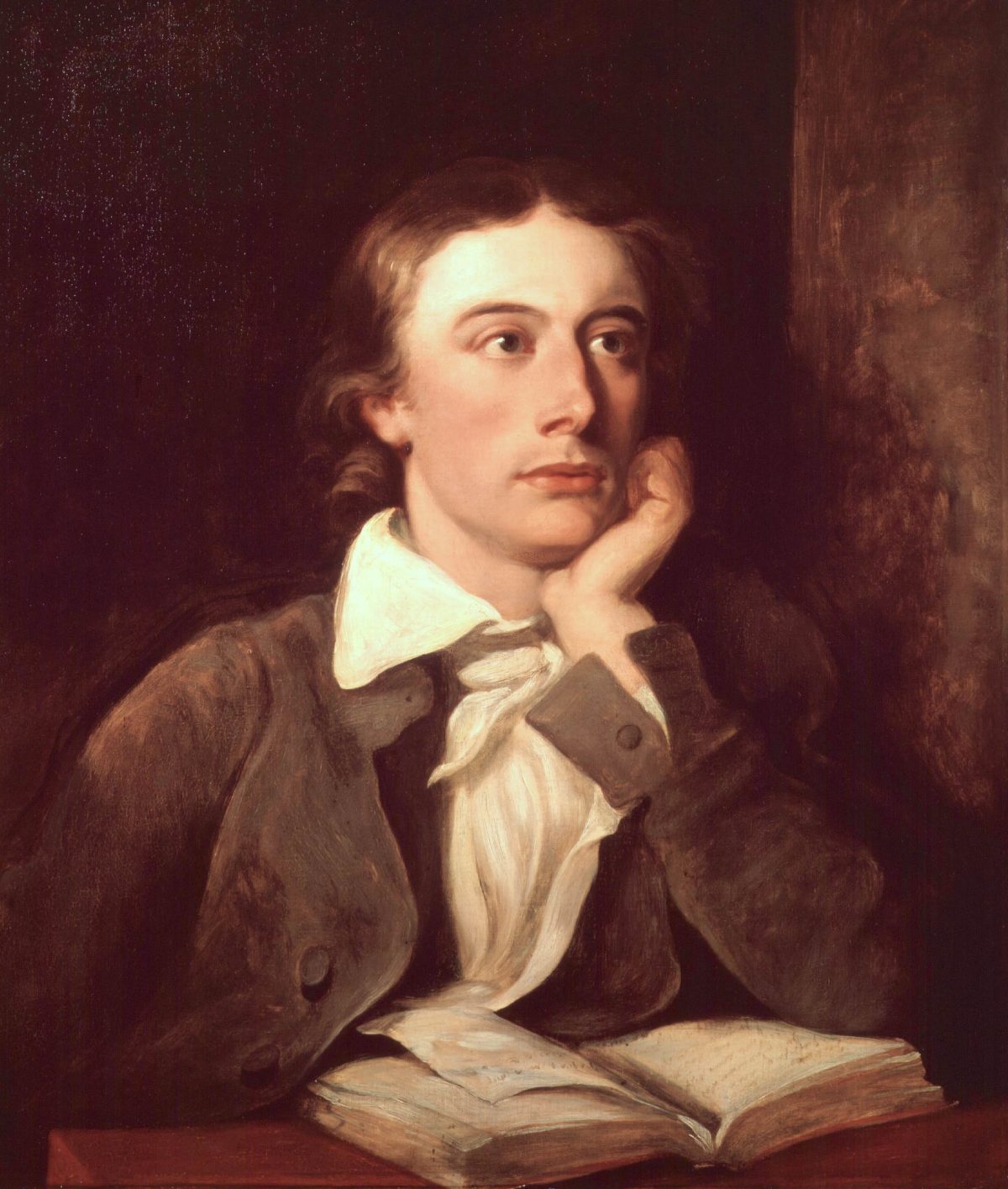Let me not to the marriage of true minds
Admit impediments. Love is not love
Which alters when it alteration finds,
Or bends with the remover to remove.
O no! it is an ever-fixed mark
That looks on tempests and is never shaken;
It is the star to every wand’ring bark,
Whose worth’s unknown, although his height be taken.
Love’s not Time’s fool, though rosy lips and cheeks
Within his bending sickle’s compass come;
Love alters not with his brief hours and weeks,
But bears it out even to the edge of doom.
If this be error and upon me prov’d,
I never writ, nor no man ever lov’d.
William Shakespeare
To Autumn
Season of mists and mellow fruitfulness,
Close bosom-friend of the maturing sun;
Conspiring with him how to load and bless
With fruit the vines that round the thatch-eves run;
To bend with apples the moss’d cottage-trees,
And fill all fruit with ripeness to the core;
To swell the gourd, and plump the hazel shells
With a sweet kernel; to set budding more,
And still more, later flowers for the bees,
Until they think warm days will never cease,
For summer has o’er-brimm’d their clammy cells.
Who hath not seen thee oft amid thy store?
Sometimes whoever seeks abroad may find
Thee sitting careless on a granary floor,
Thy hair soft-lifted by the winnowing wind;
Or on a half-reap’d furrow sound asleep,
Drows’d with the fume of poppies, while thy hook
Spares the next swath and all its twined flowers:
And sometimes like a gleaner thou dost keep
Steady thy laden head across a brook;
Or by a cyder-press, with patient look,
Thou watchest the last oozings hours by hours.
Where are the songs of spring? Ay, Where are they?
Think not of them, thou hast thy music too,—
While barred clouds bloom the soft-dying day,
And touch the stubble-plains with rosy hue;
Then in a wailful choir the small gnats mourn
Among the river sallows, borne aloft
Or sinking as the light wind lives or dies;
And full-grown lambs loud bleat from hilly bourn;
Hedge-crickets sing; and now with treble soft
The red-breast whistles from a garden-croft;
And gathering swallows twitter in the skies.
John Keats

There is consensus among literary critics that the poem “To Autumn” by John Keats is a model of perfection. Commonly known as “Ode to Autumn”, it is acclaimed as a perfect Romantic poem because of its achievement of the qualities sought after by Romantic poets, including the thoroughness of its identification with its subject.
It is perfectly balanced in its three stanzas articulating the temperate season of autumn. The first stanza expresses the season’s transition from summer and the way it is associated with the full maturity of crops and fruits. Stanza two pictures the activities of autumn, particularly the harvesting by farmers. Stanza three captures the late period bordering on the coming of winter. The season is personified, especially in the middle stanza where it becomes the reapers and workers whose activities typify the season of harvest.
This personification helps the poem attain the essence of Romantic poetry, which also accounts for the notion of perfection. It achieves empathy, much desired in romanticism, where the poet is fully immersed and is harmoniously in tune with his natural environment – a favourable one with the spirit of inspiration, free of melancholy, gloom or despair. Both poet and poem are at one with nature, which is the master spirit of Romantic poetry. “To Autumn”, through its very vivid and sensual imagery, actually becomes autumn and communicates its qualities.
This same thoroughness and degree of perfection can be found in “Sonnet 116”. This is one of William Shakespeare’s famous collection of 150 sonnets. It focuses on the theme of love. These sonnets are interesting for their generation of as much intrigue and mystery as admiration for an extraordinary achievement in the craft and scope of poetry. The absence of factual information about much of Shakespeare’s life has been satisfied by myth, and this found its way into the extraordinary corpus of Shakespearean sonnets. There has been speculation about to whom several of them are addressed or dedicated, and the mythology includes “the fair youth” and “the dark lady of the sonnets” whose identity has escaped historians, critics and readers for centuries. Several of them are written to and for a nobleman who was one of Shakespeare’s patrons.
“Sonnet 116”, however, is more remarkable for its attempt to define love itself, rather than the expression of love for whomever the sonnets were written. Yet it serves as powerful support for those sonnets which express themselves in the first person. It underlines this poet’s approach to love, an approach that is prevalent in his plays and reiterated in the sonnets.
This poem can claim qualities of perfection just like Keats’ “To Autumn”. It is an Elizabethan poem, not a Romantic, and so the reference points are different, but its images, structure, versification and its concluding couplet are all part of this achievement. It is a typical Shakespearean sonnet with three quatrains and a couplet, progressing from the beginning with each set of four lines defining the qualities of love – each enduring characteristic becoming more and more infinite until all is sealed in the last two lines. To support his claims, the poet stakes his reputation and the very act of love itself.
In the poem love is perfection – uncompromised. It does not falter and is not led astray; it is unchanging (Plato says the same about God and perfect love); it is constant as the northern star and can be a guide and a rescue. Ships at sea looked to the star for guidance of their course.
Then finally, which is its most telling quality, it is not subject to the deteriorating effects of time. “Rosy lips and cheeks” do not last and are ravaged by time; and it is not fickle – it does not alter with the passage of “brief hours and weeks”, but endures.
In this poem Shakespeare repeats what he dramatises in the comedies. He makes a difference between true love and what is superficial, based on what is seen; it is of the mind rather than of the eyes. Note here he calls it “the marriage of true minds”. In the comedy A Midsummer Night’s Dream, he wrote: “Love looks not with the eyes but with the mind”.
In this play, what many readers find it hard to appreciate is that characters have to learn to achieve and benefit from true love.
This is often contrasted with infatuation, and the playwright laughs at shallow love that is based merely on what one sees. Characters go through a learning process before they find true love at the end.
The poem then, is outstanding for the way it accomplishes perfection in its structure as a sonnet.
Then it carries out quite a logical argument for the stable qualities of love, using operative imagery, convincing argument and a very persuasive concluding couplet. It is a poem that is as well wrought as the faultlessness of its subject matter.







